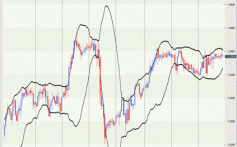Liquid Alternatives Hedge Funds and Private Equity Funds for the Masses
Post on: 16 Март, 2015 No Comment

Follow Comments Following Comments Unfollow Comments
In concept, liquid alternative are alternative investments such as hedge funds and private equity funds that are available to any investor. Whereas traditional alternative investments can only be purchased by accredited investors (i.e. people with a net worth of $1 million or more not including their primary residence, or have an annual income of $200,000 or more), liquid alternatives are open to anyone. They often do not require large investments as many traditional alternatives do.
Bill McBride, executive vice president at quantitative research and technology specialist Markov Processes International (MPI). highlights the asset level minimum typically required to build a diversified portfolio of hedge funds: “To achieve a sufficiently diversified pool of strategies, an investor would likely invest in 15 to 20 hedge funds. If investing directly, a good portfolio of hedge funds would require a $15 million to $20 million total initial investment as investment minimums for most quality managers are typically no less than $1 million. Liquid alts allow advisors to create customized diversified portfolios of hedge fund strategies for investors whose net worth and/or income previously precluded them from gaining access to the uncorrelated returns streams and diversification that hedge funds have represented.”
McBride added that investors need to have enough exposure to alternatives to realize the benefits. “There is a risk in not allocating enough to alternative strategies. Advisors and investors looking to add alternative strategies to a portfolio need to do their homework and be committed.”
Liquid alternative investments are intended to provide the growth potential of alternative investments while enabling investors to buy or sell them easily. In effect, investors have access to their monies pretty much on demand. In contrast, hedge funds and private equity funds often have “gates” which provide windows when investors can take out their monies. Liquid alternatives are meant to deliver the same diversification benefits as hedge funds but with daily liquidity. The benefit of liquidity, however, typically decreases return expectations by one to two percent on an annualized basis.
Another key difference is that liquid alternatives have greater transparency being required to periodically report their holdings in the same way a mutual fund is required. Also, unlike traditional alternatives, liquid alternatives do not charge performance fees. A common fee structure for a hedge fund is known as two and twenty. This means there is a two percent management fee for the fund and 20 percent of the profits once a particular pre-determined level of performance is achieved.
“Daily liquidity and increased transparency, however, does not mean that the complexity and sophistication synonymous with hedge fund strategies are irrelevant when investing in liquid alts,” explains McBride. “Registered investment advisers are deemed fiduciaries by the SEC and need to verify that the funds they invest client money in are executing their stated strategies based on available data. The challenge of pricing and netting the exposures of the potentially thousands of positions, including derivatives, in a long/short bond fund to ensure consistency in strategy and a fund manager’s behavior is enough to overwhelm most independent advisors. Advisors and investors looking to invest in liquid alternatives require a higher level of diligence, monitoring and communication with their managers.”
McBride added that technology to address this issue is rapidly being developed. “We believe advisors and investors will seek out advanced analytical techniques and tools to assess liquid alternatives’ holdings data, better understand a fund’s strategies and potential risks,” said McBride. “Product providers are also moving to better communicate liquid alternative strategies and performance, including risks and net exposures. Regulatory guidance and action will also likely impact these developments. But with strong one-way asset flows and growth projections for liquid alts, advisors can expect these trends to continue. Moving to understand these products, their advantages, risks and role in a portfolio setting will be important as marketing awareness spreads to individual investors who will soon be asking about them, if they aren’t already.”














